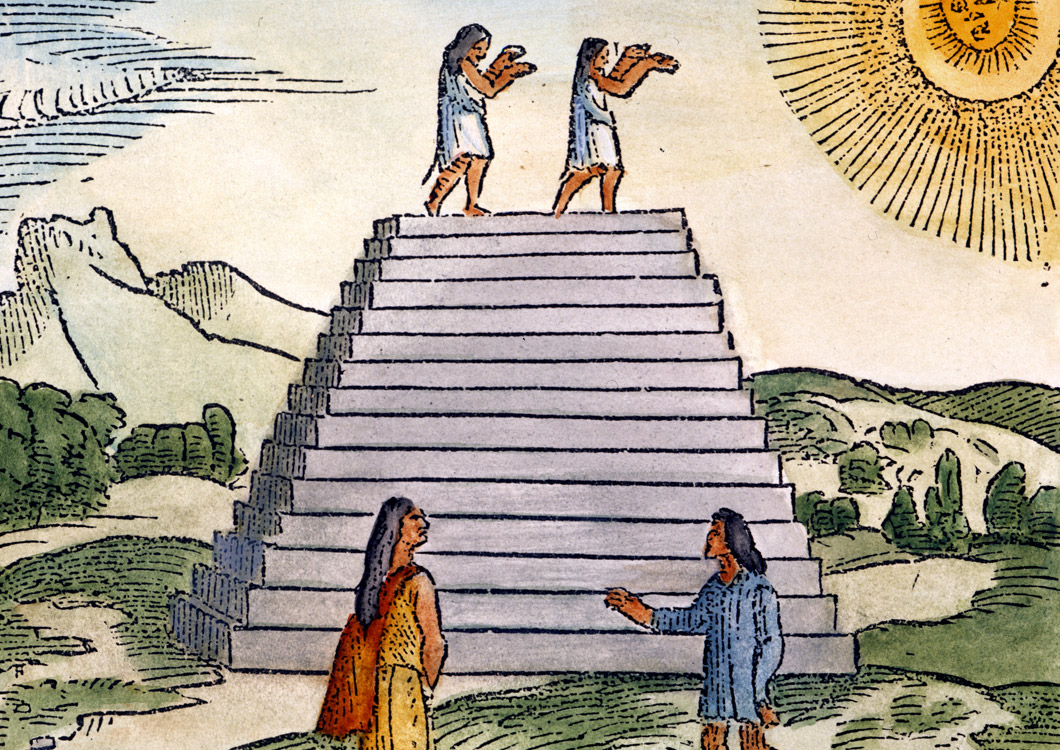Games and Activities on the Incas
- March 20, 2015
- By KIDS DISCOVER
Have students try these activities to expand their knowledge and interest in the Incas.
History
The great rulers of the Inca empire ruled from 1408 to 1528 . Create a time line on the board that begins with 1408 and ends with 1528. Have students do research to find out major events that took place around the world during these years. Events may include Columbus’s voyages, the year Gutenberg developed the printing press, the approximate years of the Renaissance, the year Cortes arrived in Tenochtitlan and conquered the Aztecs, and so on. Have students write each year and event on a sticky note and add it to the time line in the appropriate place. Ask students questions about the time line, such as “How many years after Cortes came to Tenochtitlan did Pizarro first come to Peru?”
. Create a time line on the board that begins with 1408 and ends with 1528. Have students do research to find out major events that took place around the world during these years. Events may include Columbus’s voyages, the year Gutenberg developed the printing press, the approximate years of the Renaissance, the year Cortes arrived in Tenochtitlan and conquered the Aztecs, and so on. Have students write each year and event on a sticky note and add it to the time line in the appropriate place. Ask students questions about the time line, such as “How many years after Cortes came to Tenochtitlan did Pizarro first come to Peru?”
Geography
The Andes is the world’s second highest mountain range. Have students find out the names of the five highest mountain ranges. Create a chart and list the names of these ranges in the left column. Along the top, write questions students have about these ranges, such as “Where are they located?” and “How high is the highest peak in the range?” Have students research the answers to these questions and write them on sticky notes. Then they can stick the notes in the appropriate place in the chart. Ask students questions that require them to use the chart, such as “How much higher is the highest peak in the Himalayas than the highest peak in the Andes?”
Science, Language Arts
The llama, the alpaca, and the vicuña were highly valued in Inca society. Have students find out as much as they can about each animal and present their findings in a report. The report can include drawings of each animal, showing enough details to distinguish one animal from the next.
Art, Math
Though we do not know all the details of how to create or use a quipu, students might enjoy making their own, similar to the one shown in Government and Law. Provide students with a few different colors of yarn. As a class, determine some objects in the classroom to count (pencils, paper clips, rubber bands, etc.) and which colors will represent these objects. Also determine how to represent each number (how to make long knots, where to tie the knots to represent each number, etc.). Give each student a small pile of several objects. Students can count the number of each object in the pile and mark the amount with knots on their quipu. Challenge students to “read” each other’s quipu.
Cooking, Language Arts
Potatoes were a staple of the Inca diet. Ask each student to find a recipe for a potato dish at home, at the library, or from the Internet. Students can practice their handwriting or typing skills to copy the recipe. Have students trade papers to check for accuracy. Compile and copy the recipes for each student. Students can create their own covers and titles for the cookbook. During the course of a few weeks, students may bring in a sample of their dish for everyone to taste.
Games and Activities on the Incas | Kids Discover

Kids Discover Talks with Television Lighting Designer Christopher Landy About the Rockefeller Center Christmas Tree Lighting
- December 9, 2025

It’s the Most Wonderful Time of the Year… For Community Service Projects!
- December 8, 2025

The Rockefeller Center Christmas Tree Lights the 2025 Holiday Season in New York City
- December 3, 2025